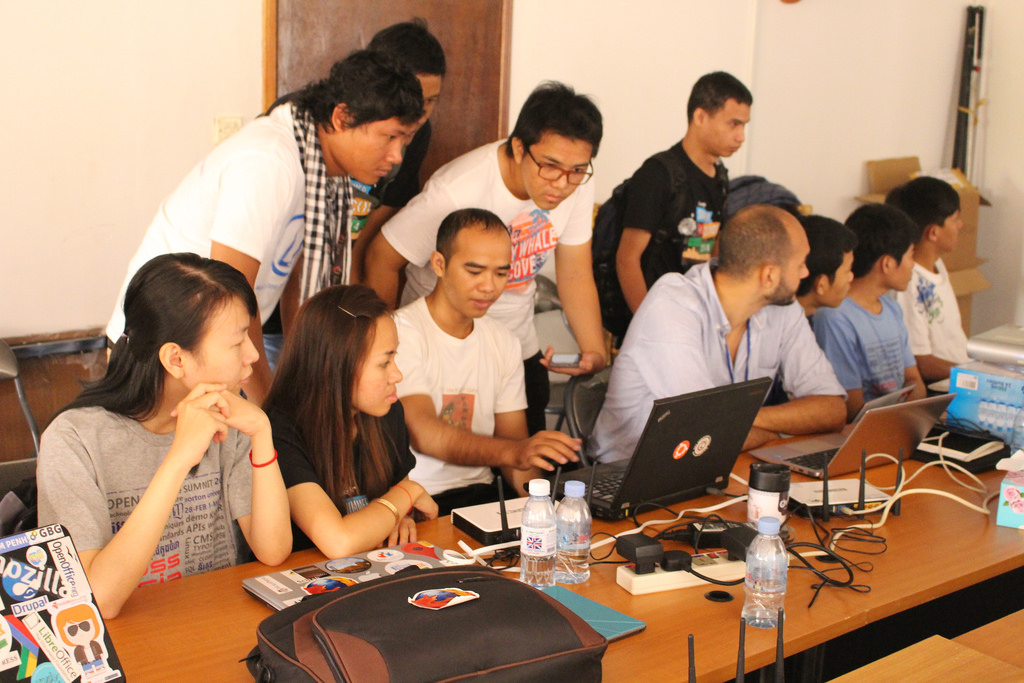-

Agility Context: We have a goal requiring creative effort. We want to succeed. Overplanning increases risk … When embarking on a creative project, success seems certain. We plan optimistically, and then almost immediately after we start, delays and challenges emerge. The plan and likely outcome keep diverging. We become more realistic. We double down on…
-

Align to a Driving Purpose
People are working. Their efforts should produce something important. But… Unfocused activities produce poor results
-

Limit Work in Progress
Context: We measure progress and experiment with processes and products. However, experiments can take a long time, and failures can have huge costs. We have a lot of balls in the air, a lot of inventory to sell, and a lot of great stuff that isn’t quite done yet. We have a problem … We adapt…
-

Measure Progress with Leading Indicators
Context: We can study others who succeed, imitate their activities and gain their skills. But these activities create nothing new. Once we have reached their capabilities, how do we know if we’ve improved? Completion metrics distract us from incremental improvement …
-

Experiment to improve
Context: Plenty of data informs us. We can forecast when things will happen. Our progress metrics are aligned with long term goals. But externalities impede our progress: competitors emerge, delays harm us. We are passive victims of outside circumstance. Passivity until risks are revealed can be too late … We suspect unknown dangers, economic loss, and growing ineffectiveness. Our…
-

Embrace Collective Responsibility
Context: It takes us time to decide to fix problems, and we let some problems fester because we don’t want to get anywhere near them. When we are on a team, we can blame someone or something else for a problem, and often do. We might blame our own permanent flaws for a problem, feeling guilty. None of…
-

Fix Systemic Problems
Context: When unimpeded by outside forces, we rapidly adapt to circumstances and succeed, but this perfect independence rarely exists. Problem: External factors limit our flow … We don’t have the knowledge, specialty resources, elasticity or authorization to do everything ourselves, but relying on others puts us at risk.
Agile Base Patterns
Agility is the degree that you can rapidly sense, adapt and succeed in changing situations and uncertainty. As technology and society advances ever more rapidly, our agility defines our success. And so, some of the best and most well-known companies, celebrity, politicians, and countries are extremely agile—they encounter problems and, unlike their slower-moving competitors, they very rapidly adapt and thrive.
You can be agile. You can achieve celebrity, or just establish a great reputation in your field. You can lead a company, civic organization or society to success. But unless you want to learn the hard way, it’s probably useful to learn how others did it.
This Agile Base Patterns category synthesizes and organizes fundamentals that are present in virtually all related frameworks. They have different names and operate in different fields—agile development, Scrum, Extreme Programming, Lean Startup, DevOps, Design Thinking, Lean Manufacturing, Getting Things Done, Pomodoro, Beyond Budgeting, Theory of Constraints. They are all practices that help you achieve higher agility, and they borrow from each other. You can use all of them simultaneously; they are largely complementary. For example, if you use Lean Startup to design products, you’ll get better results if you’re working with a development team that uses Scrum.
I have studied all these agile techniques, in depth. I have taught large companies, small startups, teams, and individuals how to use them. They became more successful and more productive as a result. One executive complained she had not seen any improvement, so I made a study of release frequency over a seven year period: during the time that we weren’t using agile methods, the average time between releases increased from 6 months (when it was a startup) to 24 months (years after it was acquired). The company was on the road to failure. Upon adopting agile methods the time between releases dropped below 3 months. Customer satisfaction and market share all improved dramatically, to be better than at any previous time. The company was saved, and agile saved it.
These Agile Base Patterns are a stand-alone pattern language. A pattern language organizes patterns to help you rapidly learn fundamentals first, then subtleties later. So, if you’d like to understand agility generally, read the Agility pattern, which is the first pattern in the Agility pattern language and the summary. The remaining patterns in this category (five as of this writing) form the second layer of the pattern language.
Every pattern in this blog starts with an leaf icon and a pattern name, like this:
 Agile
Agile
The pattern name is either something well-known already, or something easy to remember.
The description starts with a Context and a Problem. If the context and the problem seem to match your context and problem, the pattern will likely help you. If the context and problem don’t match yours, maybe there’s another pattern that does.
To understand pattern languages generally, see How to Read and Write Pattern Languages.
